Do you love to shop for plants? Then you may know that nurseries are crucial allies in the quest to expand pollinator habitat. After all, these are the businesses who grow what we plant in our yards and parks. Their decisions and skills greatly influence whether pollinators can access high-quality forage in gardens, parks and restoration areas—and whether that forage is free of harmful pesticides.
When gardeners, landscape designers and retailers identify and patronize nurseries who prioritize native plant production and pollinator-safe pest management, they are lending a big helping hand by boosting the ecological health of their communities.
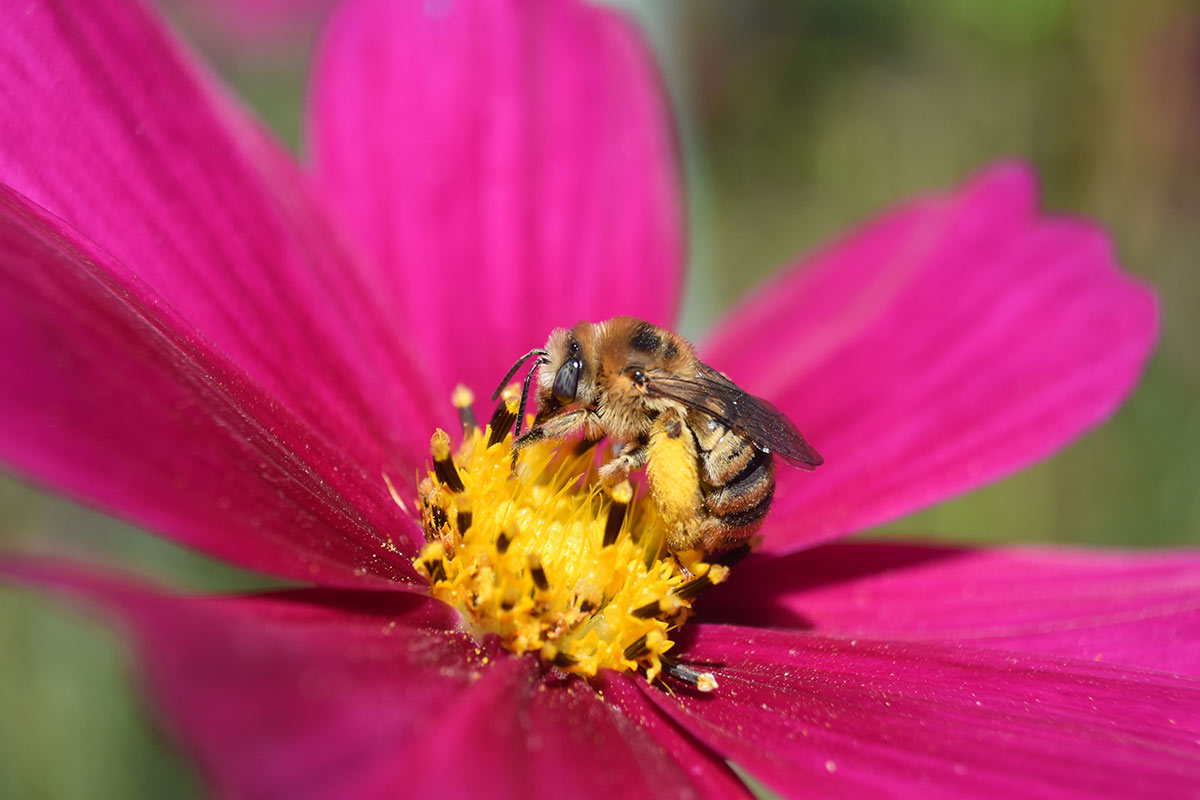
Understanding Your Nursery’s Growing Practices
Finding out whether your nursery grows truly pollinator-safe plants may seem daunting, but it gets easier with practice.
Over the years, I’ve called and visited many nurseries, starting conversations in a friendly way. I ask about what they grow, whether they propagate their own plants or source plants from others, what pests they contend with and how they manage them. I also ask about whether they use neonicotinoids (highly toxic and long-lived insecticides), but I don’t stop there because it’s not that simple. It’s also important (and interesting!) to ask how they monitor the rise and fall of insects and diseases, prevent outbreaks, exercise restraint with all pesticides, and check on the practices of their suppliers.
This conversation is something anyone can do, even if you don’t know much about nurseries. That’s how I started out. Along the way, I’ve learned a lot about the challenges nurseries face. Heated greenhouses are commonly used, which can facilitate rapid pest outbreaks. The pressure for plants to look perfect is also high—especially if shipments cross state lines. This leads to widespread use of pesticides that linger in the plants. Many of these, not just neonics, pose their own hidden risks.
Thankfully, across the country, nurseries large and small are innovating, closely observing their systems, and working with nature to keep their plants healthier and minimize toxic inputs. It’s time to share a few of their stories and practices.
At Harlequin’s Gardens, Plants Thrive with Good Soil
Mikl and Eve Brawner, owners of Harlequin’s Gardens in Boulder, Colorado, believe that if you have a pest problem, first consider your plant culture or nutrition. At their nursery, every plant is provided with compost tea or a mycorrhizae inoculant. These enhance the growth of beneficial soil fungi, allowing the plants better access to soil nutrients and water, and help suppress diseases. Other supplements include organic fertilizers derived from fish, seaweed, manure, alfalfa, rock dust and humate.
Harlequin’s also maintains a diversity of flowering plants throughout the nursery to support predators and parasitoids of nursery plant pests. An IPM “threshold” principle guides Harlequin’s pesticide usage: if pests are damaging less than 10% of the plant population, nothing is done, to allow time for native predators to control the pests. When they do use pesticides, Harlequin's relies mainly on products approved in organic production, such as horticultural oils, insecticidal soaps, and essential oils. The owners also “think upstream”, inquiring about and sourcing only neonic-free plants from their own suppliers.
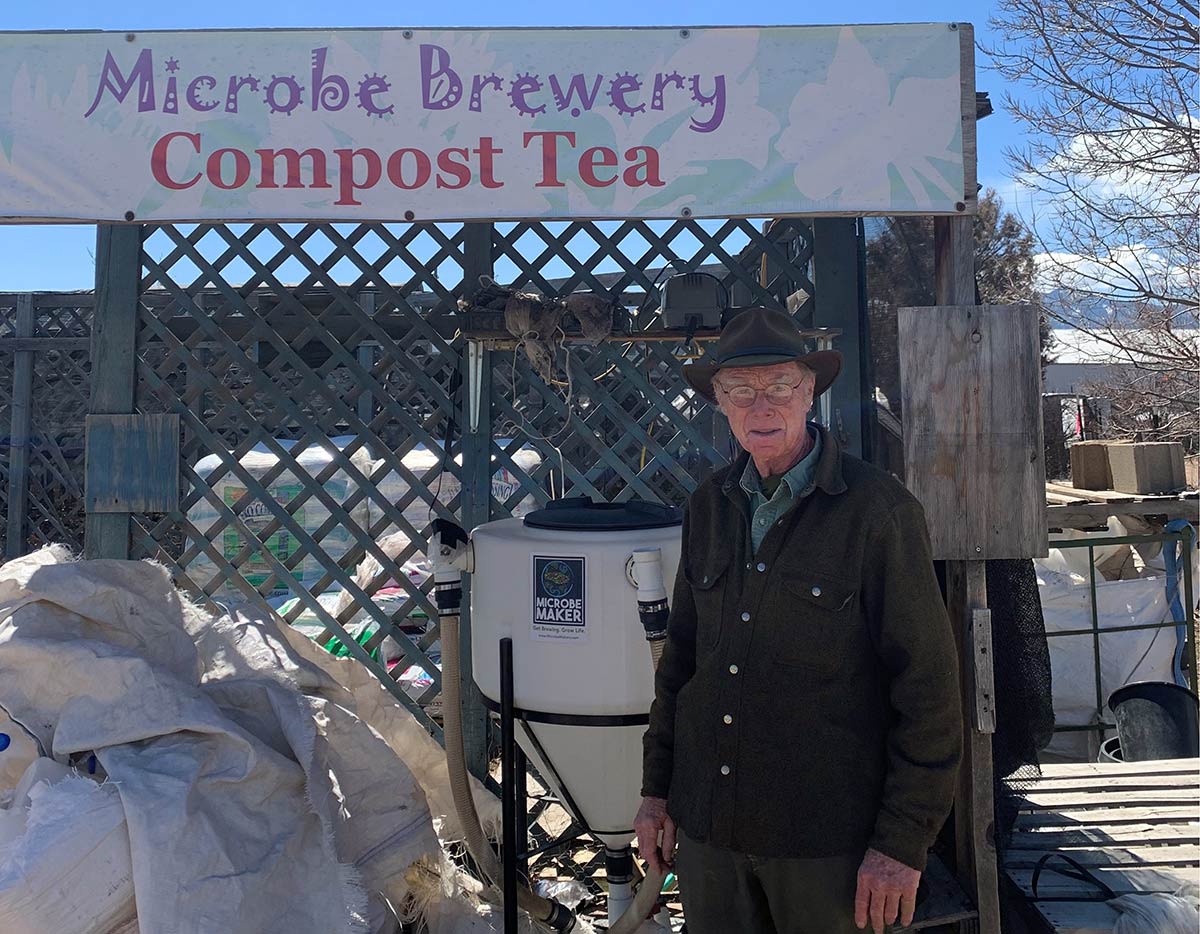
Offering Pollinator-Safe Butterfly Host Plants at Log House Plants
Thirty years ago, Alice Doyle and Greg Lee, owners of Log House Plants in the foothills of Oregon’s Cascade Mountains, began offering their Butterfly Bed and Breakfast, a collection of the host plants required to support 25 Pacific Northwest native butterfly species. Realizing their conservation importance, Log House stopped using any pesticides in their production of these host plants.
For more than a decade, Log House has avoided most synthetic pesticides on the rest of their inventory as well—thousands of species of vegetable, herbs, and ornamentals. A weekly scouting program, scrupulous record keeping, and close attention to susceptible crops enables staff to keep a watchful eye on any emerging outbreaks.
Inside their greenhouses, Log House releases commercially raised predators and parasitoid insects to reduce pests like thrips and aphids. Releases are confined to the greenhouse to reduce the chances that introduced predators and parasitoids could interfere with the local ecosystem. Bigger plants go outdoors, where nearby insectary trees harbor native natural enemies for the crop. Two factors that help Log House keep pesticide use low include relatively rapid turnover of their stock and a diverse assortment of plant species.
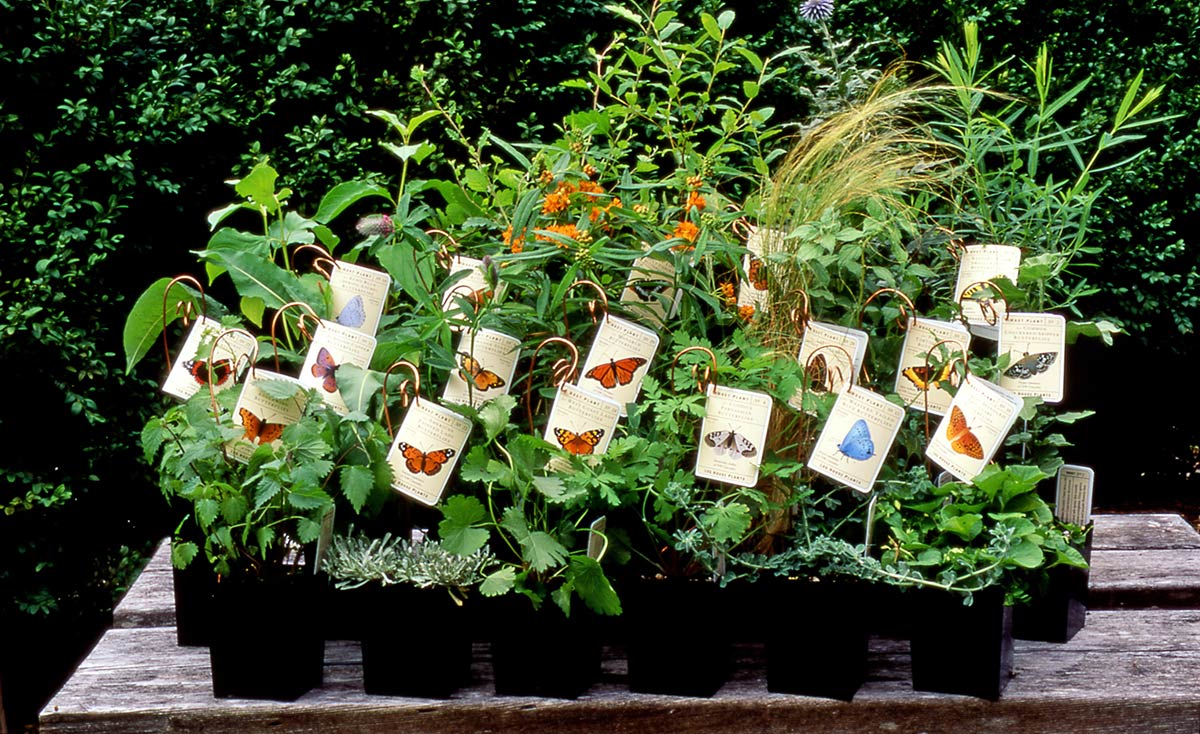
Pinelands Nursery Ditched the Neonics and Cut Fungicide Sprays in Half
Starting a native plant podcast was probably a no-brainer for Tom Knezick and Fran Chismar of Pinelands Nursery in Columbus, New Jersey, equipped as they are with decades of experience in the production of native plants of the mid-Atlantic. That, combined with their natural curiosity and adaptability, made the podcast a great fit.
Adaptability also shows up in their nursery practices. For example, after learning that fungicides could harm pollinators, Pinelands cut their fungicide sprays in half. Other adjustments made over the years include giving up neonics and avoiding pesticide applications while flowers are in bloom. Pinelands has dedicated part of their nursery area to a wetland site with specialist species. This area provides seed, while simultaneously attracting native beneficial insects.
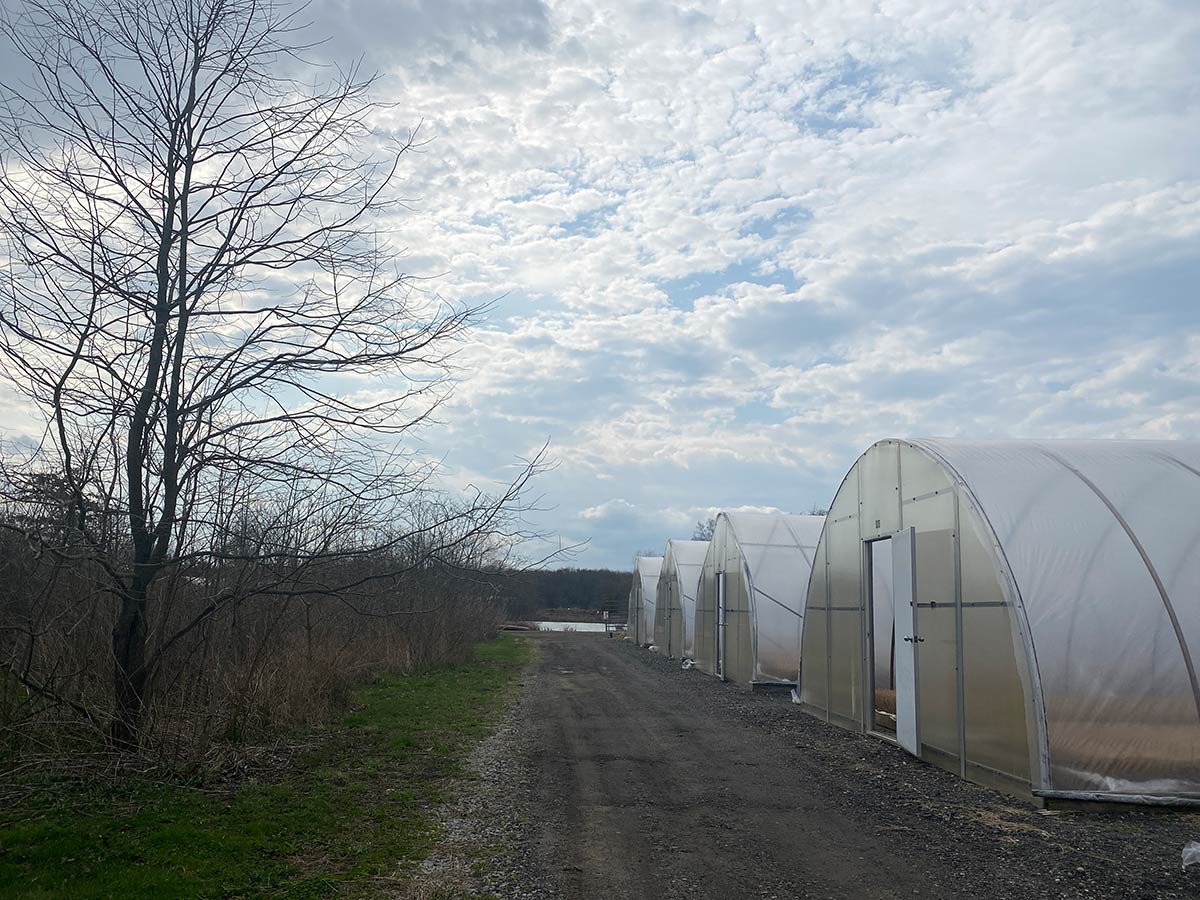
Talk to Your Nursery
Nursery practices matter. Pollinators need plants free of harmful pesticides. Getting started on a dialogue with your nursery to learn if they employ safer pest management practices is easy. A few simple questions can start a conversations. We also have resources for going deeper. Let us know how the conversation goes!
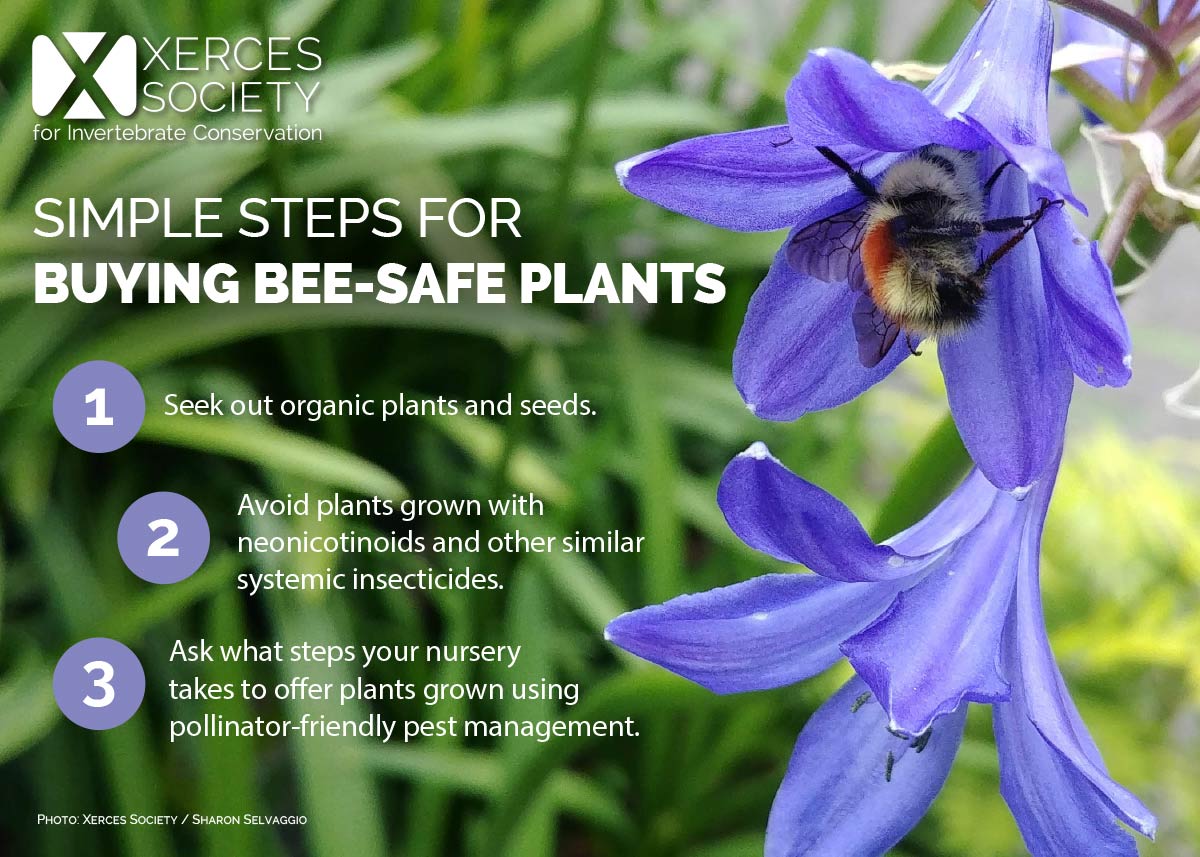
Resources
- Buying Bee-Safe Plants (Xerces Society guide to asking nurseries about their pest management practices)
- Offering Bee-Safe Plants: A Guide for Nurseries (Xerces Society guide to principles and indicators of pollinator-friendly plant production)
- Pollinator-Friendly Native Plant Lists (Xerces Society guides to pollinator-attractive native plants)
- Bee-Safe Nursery Plants (Tell us about your nursery outreach and we’ll add it to the map!)




